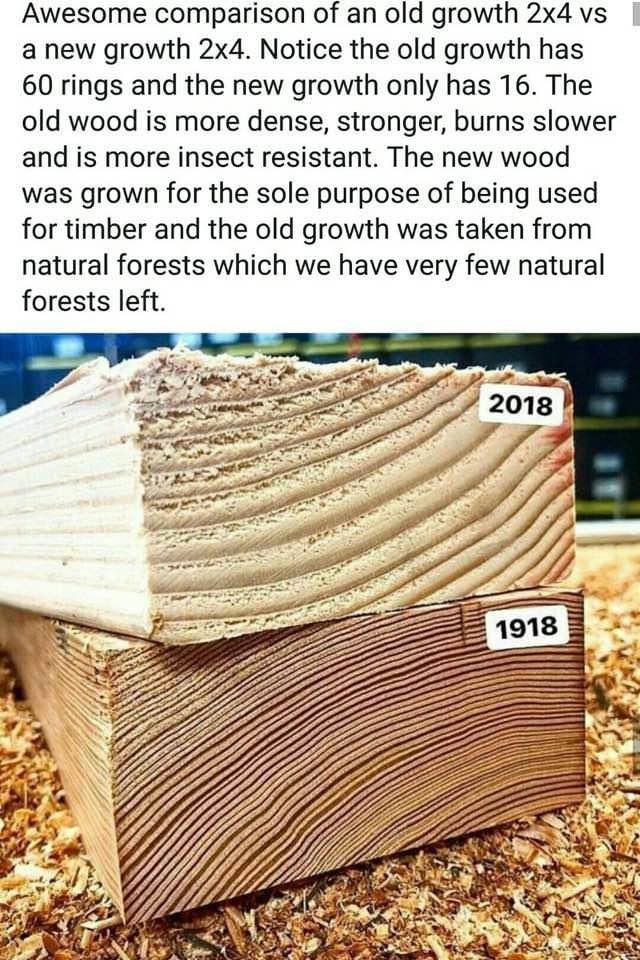It seems a little odd that other crops have been cultivated to literally suit people’s tastes and interests, yet many trees…Seemingly not as much?
I recognize the growth cycles are much longer, in some(many?) cases far exceeding individual human lives, but whole civilizations have been relying on trees for ages. Have none, not even isolated parts of them, been stable enough to take on this experiment?
Yes, quite a lot. Tree farms are a real thing, where they grow fast growing softwoods like pine, planted in grids for easy harvesting. These farms are continually planted and harvested just like any other crop.
This may or may not be a good thing, because these farms are monocultures, not biodiverse forests. So while they contribute to tree counts, they aren’t contributing to the ecosystem.
Interesting, thanks! I vaguely knew of tree farms, but more for like decorative trees or fruit trees than general purpose ones.
With the OP I was thinking even a monoculture tree farm may be preferable if it reduces destruction of natural, biodiverse forests and allows them to recover where not completely destroyed.
Forestry management is a fascinating topic.
Many commercial forests are treated like row cropped “farms”. If you are looking to grow a bunch of trees with straight trunks that grow quickly and all become harvestable at the same time, a tree farm is the way to go.
I have no true numbers to point to (though I’d love to see some), but you could imagine that if you needed to go harvest 1000 trees to send to the mill, and you have to find them in a non-plantation forest, you might have to search through 50 times as much area to get the trees you need. Logging equipment causes a lot of disturbance to underbrush, so you might get less impact on the environment as a whole by just dedicating a smaller area to the crop.
It’s the same reasons why we plant food crops in rows rather than intermingled in a forest.
Similar to food farms, tree plantations often take species from completely different geographic areas, so it’s important not to treat, for example, radiata pine plantations in new Zealand as wild spaces because they are no more wild than cornfields.
There are different styles of management for different purposes (e.g., pulp wood, construction lumber, hardwood) and the goals of the landowner (e.g., a logging company may want to maximize long term production, while on your own property, you may want to maximize continuous biodiversity).
There are also considerations for terrain and local climate. Hilly country may have bad erosion risks if there is a clear cut. Fire risks play a part. Wildlife may even benefit from clear cuts depending on the situation.
It is preferable, but as demand increases, natural forest is being felled in favor of tree farms.
In the US, at least, deforestation isn’t a concern. We have more trees now than when the settlers landed.
That looks like a hardwood vs a soft wood to me
They might look that way but they aren’t. It’s why Old growth was the choice basically forever. It’s also why we make assumptions about certain kinds of wood, because historically it was old growth being mined to produce it.
Depends on species, but old growth starts in a suppressed canopy. An old growth sapling might be 200 years old before it sees sunlight. It might take 400 more years to see itself as a canopy dominant. Then it might live for an additional 200-2000 years depending on species and location.
This makes the wood incredibly dense and rot resistant. And it simply can’t be recreated because it’s the physical conditions that determine these qualities.
The fact is that old growth forests which are now less than 3% of what they once were, they weren’t harvested. That implies they can be regenerated. They were strip mined.
I grew up in Oregon, it is so sad what we did to our forests. Only managed “forests” are left, with their even rows of stick trees
I absolutely agree. Those do not look like the same type of wood at all.
The link talks about new vs old construction lumber. “New growth” vs “old growth” is very misleading in this context. It should be understood as “fast growing trees” vs “slow growing trees” ie. soft wood vs hard wood.
With that said, I am very open to the idea that trees have been breed to grow faster (and of worse quality). I believe that without having any evidence of it, but this is not that evidence.
Weird throwaway comment.
You can’t select for old growth over second growth. That’s not how that works.
Yes there definitely have been major breeding exercises. I’ve toured some tissue culture facilities where they produce 10k seedlings a day of some tree species like redwood or Doug fir. I know that facilities breeding program focused on redwoods for decades and I met their geneticist.
Also, poplar has undergone major breeding for the biofuels industry to come up with species that have less hemi cellulose and lignin for easier digestion in bioreactors. There have also been some start ups claiming to “hack” photosynthesis also using, I believe, poplar (it’s like they don’t know what oxygen is).
That’s good to know, thanks!
I’ll have to look into bioreactors more. I’m also not sure about that last sentence, but then it sounds like maybe they don’t know what’s up either (or how to communicate it).
Basically, the molecular architecture of photo synthesis evolved in the absence of oxygen. It is severely inhibited by the presence of oxygen. Same goes for the enzymatic reaction to fix nitrogen. Basically oxygen fucked everything up
However oxygenic respiration is far more effective. You get way more atp bang for your rubisco sugar buck doing oxygenic respiration.
Likewise, you are splitting off oxygen as a terminal electron receptor in photosynthesis. So, shits just around.
Saying you are going to hack or solve photosynthesis us a great sales pitch. You can get a genetics company funded saying this, many have. But realistically, if anyone did “hack” or “solve” this (as if it’s a problem needing solving), it would be a disaster. In the time period when plants had figured out photosynthesis and lignin, and before wood decomposing fungus, we had glaciers basically to the tropics. Not to mention, well, oxygen. You just aren’t going to beat oxygen.






